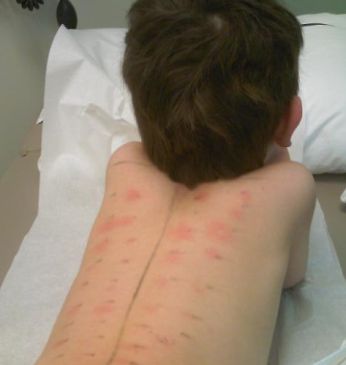Allergies in Children: When to See a Pediatric Allergist
Allergies are one of the most commonly occurring health problems in humans and almost everybody is allergic to something or the other. Allergies are found in adults and infants alike and severity of allergies also varies from one person to other person. Children are very sensitive to the environment around them and develop allergies to a lot of things over time. These allergies are associated with many unpleasant experiences and sometimes life-threatening symptoms. So how do you know that the symptoms of your child’s allergy have crossed a certain barrier and become life-threatening as mentioned in the article? How do you when to contact a pediatric allergist for further treatment? Read on to know more.
Allergies in Children – An Overview
As told before, allergies are seen in both adults and children and even infants are not an exception to this. In fact, it is infants who are more susceptible to allergies and find it difficult to deal with the symptoms. However, kids are not smart or mature enough as adults to understand these symptoms and let their parents know what’s happening in their body, especially infants. So it is the responsibility of parents to recognize these symptoms in their children and ensure the child receives the proper treatment from a pediatric allergist in Springfield, Tucson, or elsewhere in the US before these symptoms can turn life-threatening. Before we learn how to recognize these symptoms and the type of treatments pediatric allergists can provide, let’s understand how allergies are caused and what the different types of allergies found in children are.
 Causes of Allergies in Children
Causes of Allergies in Children
Allergies are of different types and can happen anywhere on one’s body. Allergies are caused by allergens which are triggered when they come in contact with certain external elements or irritants. The allergens when triggered release many forms of attacks on the irritants including aggressive chemical attacks to protect the body from these supposed to be harmful elements. However, these so called harmful elements are most of the times trivial things like minute dust particles, pet hair, molds, pollen and certain eatables. The immune system gets over protective against these trivial elements and constantly retaliates by waging attacks that have adverse effects on the hosting body, in this case, the child’s body. These effects can range from mere itches and rashes on skin to life-threatening, uncomfortable experiences which are too strong for a kid to bear. Genetics is also said to be one of the reasons why children grow allergic to certain things around them.
Different Types of Allergies in Children
The most popular types of allergies in children are Allergic Rhinitis (Hay Fever), Nasal Congestion, Ear Infections and Food Allergies. Outdoor elements like tree pollen and insect bites, indoor elements like dust mites and molds, irritants like cigarette smoke and perfume and food items like peanuts, eggs and dairy products are the most common allergy causing elements in children.
Who is a Pediatric Allergist?
An allergist is a physician whose responsibilities include diagnosing the reason for allergens triggering in one’s body, identifying the severity of the allergy and recognizing the type of allergy (http://www.webmd.com/allergies/guide/allergy-symptoms-types), prescribing medications and allergy shots to cure these symptoms. An allergist who specializes in treating infants and kids is known as a pediatric allergist. Pediatric allergists can be found in every children’s hospital, university medical centers and large community hospitals. Make sure the pediatric allergist you take your child to be certified by the American Board of Allergy and Immunology for qualification and experience.
When to Seek the Help of a Pediatric Allergist?
You need to contact a pediatric allergist as soon as you see the below mentioned symptoms in your kid.
• When the child shows hay fever symptoms like runny nose, congestion, sneezing, itchy nose and eyes for more than two weeks or if the symptoms appear again and again during a particular time of the year.
• When the child shows asthma symptoms like difficulty in breathing, shortness of breath, coughing, sneezing and chest tightness. Rush immediately if these symptoms appear repeatedly during night time.
• When the child shows certain allergic symptoms like rashes on the skin, stomach upset, paleness and lightheadedness after consuming a certain food. It is wise to keep an eye on what your child eats every time and have a clear cut idea of what he/she is allergic to.




